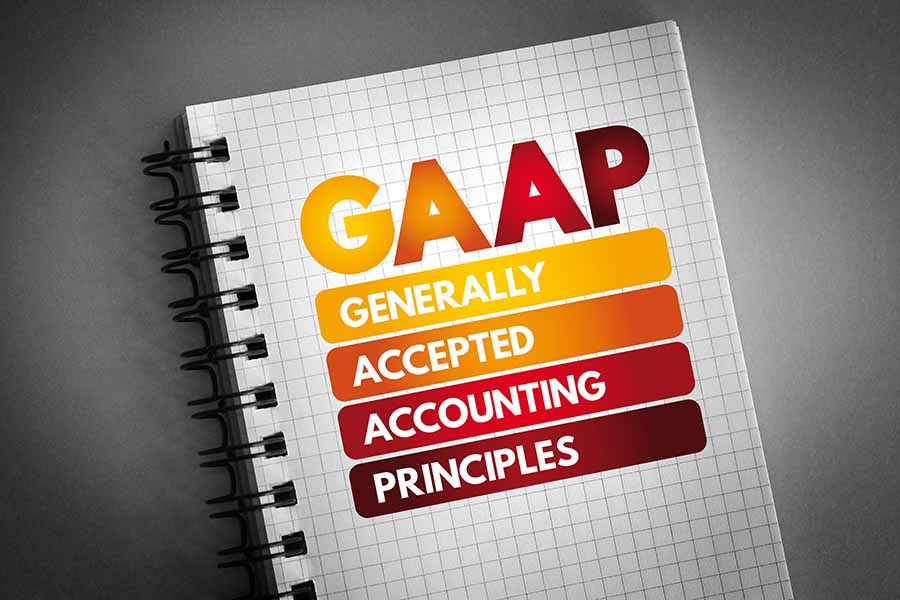Goodwill is an intangible asset that arises from a business combination. When one company purchases another, the acquiring company often pays more than the value of the acquired company’s net assets. Think of it like selling a product—if you want to make a profit, you need to charge more than what the product costs to make.
Similarly, goodwill represents the premium that the acquiring company pays beyond the tangible value of the acquired business, reflecting the brand reputation, customer loyalty, and other intangible benefits that come with the acquisition.
Factors Affecting Goodwill
While goodwill only arises from business acquisitions, factors affecting the purchase price also affect the value of goodwill. If we look at the big picture, goodwill is the premium price that the acquiring company pays for the unaccounted aspects of a business.
- Brand reputation: Technically, brand reputation has no monetary equivalent, but companies can be valued highly due to their reputation among competitors and influence in the industry. Hence, valuing brand reputation even when there’s no monetary basis increases goodwill.
- Customer loyalty and base: A large customer base enhances goodwill since competitive companies are often willing to pay a premium to access those customers. For example, if your business struggles in entering the CRM software market, acquiring a leader like Company B would mean gaining not just its market position but also its loyal customers.
- Quality of management and workforce: The combined experience and talent pool in a company also affects goodwill valuation. Even the names of the key leadership positions—like president, CEO, or director—can significantly impact the value of a company. Though human resources aren’t recorded in the balance sheet, its value still affects the company in unquantifiable ways.
- Synergies from acquisitions: Acquiring a business can improve synergies across your company. For example, Company A might be a manufacturer of widgets that you need in Company X. Hence, acquiring Company A enables you to internally manufacture raw materials and maintain cost leadership among competitors.
How to Calculate Goodwill
The goodwill formula is:
Where the fair market value (FMV) of net identifiable assets is calculated as:
EXAMPLE: On January 2, 20X3, Astra Company entered into a business combination with Zeneca Inc. The form of business combination is a statutory merger, wherein Zeneca Inc. will be dissolved and Astra Company will continue to operate under the new name AstraZeneca Corporation.
As the acquiring company, Astra Company agreed to pay $35 million to Zeneca Inc. At the time of acquisition, Zeneca Inc. had the following figures:
- Assets at fair value: $40 million
- Liabilities at fair value: $15 million
Hence, the FMV of net identifiable assets of Zeneca Inc. at the time of acquisition is $15 million ($40 million − $15 million).
At the completion of the business combination on January 1, 20×4, the newly established AstraZeneca Corporation should report a goodwill of $10 million.
Goodwill = $35 million − $25 million = $10 million
The journal entry in the books of AstraZeneca Corporation should have the following:
Date | Account | Debit | Credit |
|---|---|---|---|
Jan 1, 20x4 | Assets - Zeneca Inc. | 40,000,000 | |
Goodwill | 10,000,000 | ||
Liabilities - Zeneca Inc. | 15,000,000 | ||
Common Stock or Cash | 35,000,000 | ||
(To record acquisition of Zeneca Inc.) |
While it may seem straightforward at first glance, there’s much more beneath the surface. Let’s discuss some of the complexities behind this in the sections below.
Purchase Price
More often than not, the purchase price is ultimately based on the agreement between the acquirer and the acquiree. What complicates the purchase price is the mode of payment.
The acquirer can pay the acquiree using any or a combination of the following:
- Cash: The acquirer will pay the full purchase price in cash.
- Stock issuance: The acquirer will issue its own stocks to the acquired company. Hence, the owners of the acquired company will have stock ownership in the acquirer’s company.
- Debt financing: The acquirer will borrow from a financial institution to settle the purchase price.
- Convertible securities: The acquirer will issue convertible bonds to the acquiree, which can later be converted into stocks by the acquiree.
- Contingent consideration: The acquirer will pay additional if the acquiree meets a certain milestone or regulatory approval. This type of payment mode is usually applicable only to statutory consolidations where there is a controlling interest (parent company) and non-controlling interest (subsidiary company).
For instance, Astra Company may lay out the following payment modes to Zeneca Inc.:
- Astra Company will pay $15 million in cash outright to the owners of Zeneca Inc.
- Astra Company will issue 40,000 Class A common stocks for $250 per share, a total of $10 million in Astra Company stocks.
- Astra Company will issue $10 million convertible bonds that can be converted into Class A common stocks at $20 per share.
If Zeneca Inc. agrees to the proposal, the journal entry to record the acquisition is as follows:
Date | Account | Debit | Credit |
|---|---|---|---|
Jan 1, 20x4 | Assets - Zeneca Inc. | 40,000,000 | |
Goodwill | 10,000,000 | ||
Liabilities - Zeneca Inc. | 15,000,000 | ||
Common Stock or Cash | 35,000,000 | ||
(To record acquisition of Zeneca Inc.) |
Fair Market Value of Net Identifiable Assets
Determining the FMV of net identifiable assets is the toughest part of the acquisition process. That’s why the acquisition period usually lasts for a year because it’ll involve thorough investigation of the acquired company’s records to spot all assets and liabilities.
- Identifiable tangible and intangible assets except goodwill: Only tangible assets that are expected to provide future economic benefits to the acquirer and can be reliably measured in terms of value are considered.
- Liabilities: Only liabilities that are expected to result in a future outflow of resources and can be reliably measured are considered.
- Off-balance sheet items: If the acquired company has leases or entities not recorded in the balance sheet, those assets or liabilities must be discovered and properly measured at their acquisition-date fair values.
Negative Goodwill
Though uncommon, some acquisitions result in negative goodwill, wherein the acquiring company purchases a company for a price less than the fair value of net identifiable assets. Negative goodwill is also called “gain on bargain purchase.”
Think of it like buying a product that usually costs $100, but you bought it at a discounted price of $80. The $20 difference is like negative goodwill. In the books of the acquiring company, negative goodwill is recorded in the income statement as a gain. Hence, it is not capitalized.
To illustrate, here’s a sample journal entry that shows negative goodwill:
Date | Account | Debit | Credit |
|---|---|---|---|
Jan 1, 20x4 | Assets of acquired company | 120,000 | |
Liabilities of acquired company | 40,000 | ||
Cash | 50,000 | ||
Gain on bargain purchase | 30,000 |
Goodwill Impairment
Under US GAAP, goodwill must be tested for impairment at least once a year or more frequently if there are indicators of impairment, such as:
- Market declines, such as stock price drops
- Economic downturns or recessions
- Adverse regulatory changes
- Company restructuring and significant layoffs
- Technological obsolescence
- Technological disruptions, such as the rise of AI and machine learning
- Public health crises that may interrupt normal flow of business operations, such as the COVID-19 pandemic
Here are some real-life examples where impairment happened:
- 2008 Financial Crisis where valuation of US companies declined drastically.
- 2020 COVID-19 Pandemic where airline companies had to suffer impairment losses due to reduced travel demand, border restrictions, and overall decline in tourism.
We use the formula below to compute goodwill impairment:
To illustrate, let’s use our previous example from AstraZeneca Corporation. A year after the acquisition, it experienced significant stock price decline due to product recalls and an ongoing class action lawsuit. The carrying amount of its goodwill is $10 million, but after impairment testing, its fair value is only at $7.1 million.
The impairment loss is $2.9 million ($10 million − $7.1 million), which should be recorded in the books as:
Date | Account | Debit | Credit |
|---|---|---|---|
Jan 1, 20x5 | Impairment loss | 2,900,000 | |
Goodwill | 2,900,000 | ||
(To record goodwill impairment) |
In the balance sheet of AstraZeneca, goodwill should now be reported at $7.1 million after the adjusting entry above.
Frequently Asked Questions (FAQs)
Goodwill has no resale value, can’t be used as collateral for loans, requires highly subjective valuations, and depends heavily on qualitative factors to determine its value. Additionally, it isn’t amortized, which means it remains on the balance sheet at its original value for years, potentially inflating the company’s financial position or giving a misleading view of its true worth.
Technically, goodwill has no example because it is just the difference between the purchase price and fair market value of net identifiable assets. However, this difference can simply be associated with intangible elements of the business—such as brand reputation, internal processes, talent pool, business leadership credentials, and customer lists.
Yes, goodwill is an intangible asset and only arises from acquiring other companies.
Bottom Line
Goodwill may seem like an advanced concept for many small businesses, but as yours grows, you might find yourself acquiring other companies to expand your operations and offerings. When that time comes, recognizing goodwill on your balance sheet will likely become a key part of accounting for the value of those acquisitions.


